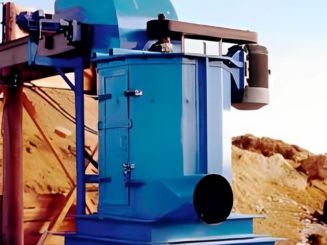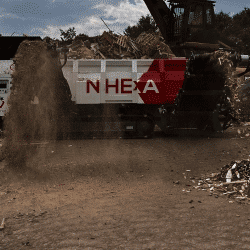PowerMaster uses new technology to remediate landfills, recycle waste, and convert waste to energy
PowerMasterannounces the launch of its ReCyclone technology, which reduces waste in landfills, turns waste into energy, and recycles waste products. The ReCyclone is an eco-friendly gyroscopic grinder that can be programmed to process everything from large pieces of concrete to regular household garbage. The ReCyclone cuts the amount of waste going into landfills by half, eliminates the need for fill dirt, and can extend the lifespan of landfills by up to seven-fold.

"The world is running out of landfill space—many states and even some countries now have to export their garbage because they don't have any place to put it," said Haiku York, President of PowerMaster. "And with millions of tons of waste generated daily, the problem is only going to get worse. At PowerMaster, we're committed to doing something about that and cleaning up the planet. Our ReCyclone technology turns garbage into fuel, fertilizer, compost, and recyclable materials. The waste that can't be recycled is processed into dry fluff that takes up far less landfill space."
By eliminating almost all of the moisture from waste, the ReCyclone reduces bacteria and landfill odors, preventing disease-ridden animal vectors. In addition, processing the waste into dry material reduces the moisture in landfills and groundwater leaching. The ReCyclone also has the ability to convert waste into small fuel pellets which burn better than coal, as well as grind up corn and corn stalks to be used for ethanol. The ReCyclone can be custom programmed for all types of waste and is adjustable for any output size.
"There's really no other machine like it," added Lila York, Director of Special Projects of PowerMaster. "Our product is half the price of other machines, one-tenth the maintenance cost, has virtually no downtime and when something gets in it that shouldn't be there, it doesn't blow up like other machines do. In fact, the ReCyclone is the safest machine on the market today. Once people realize how much it reduces both waste and costs, we expect to see a huge market demand."
Case Study – Houston Wood Waste and Clean-up
Revolution Environmental Group, LLC. provides the following case study as a means of providing observed operating data on Revolution equipment. The following information represents opinion, observation, and information from Revolution employees and contractors as well as information related from third party sources.
Revolution Environmental Group, LLC. delivered to a Houston based contractor a rental Revolution 200 for use in producing soils from waste wood for the time period it took Revolution to manufacture a new Revolution 200 HP unit. The Christian High School had purchased a piece of land that had been formerly been used as a waste wood receiving and soils processing lot. The seller of the property left approximately 800,000 cubic yards of waste wood on the site.
The 200 HP rental unit arrived configured for extremely close reduction. The settings were basically unaltered from its last test in which pumice was reduced to a 90-micron powder. Running the rental unit, as it was, produced an extremely fine product constituted of two basic fractions. A light fraction, consisting of extremely fine wood fibers, overlaid a heavier fraction of powdered soil. While commendable, the sizing was smaller than the customer considered optimum.
After a 15 minute on site change in the rotor and impeller settings, the Revolution produced a 1” minus product. The contractor’s sales and management declared the product an excellent and well-balanced soil mix and a time code that confirmed over a 10x doubling of output to a recorded production of 600 yd³ / hour.
The contractor, by the estimate of the site supervisor, averaged only about 340 cubic yards an hour from the Revolution. This lower output was, in the estimate of Revolution engineers, primarily due to feeding irregularities. The contractor used the same loader to feed the unit as it did to push material away from the discharge chute on the side of the unit. This resulted in loss of time. The feed conveyor frequently had long empty spots on it. The use of two loaders, or one loader with a stacking conveyor coupled to the discharge chute would have increased the output of the unit by at least 300 cubic yards up to 600 yd³ / hour.
At this site, the Revolution produced a high quality finished product that required no other process before marketing.












